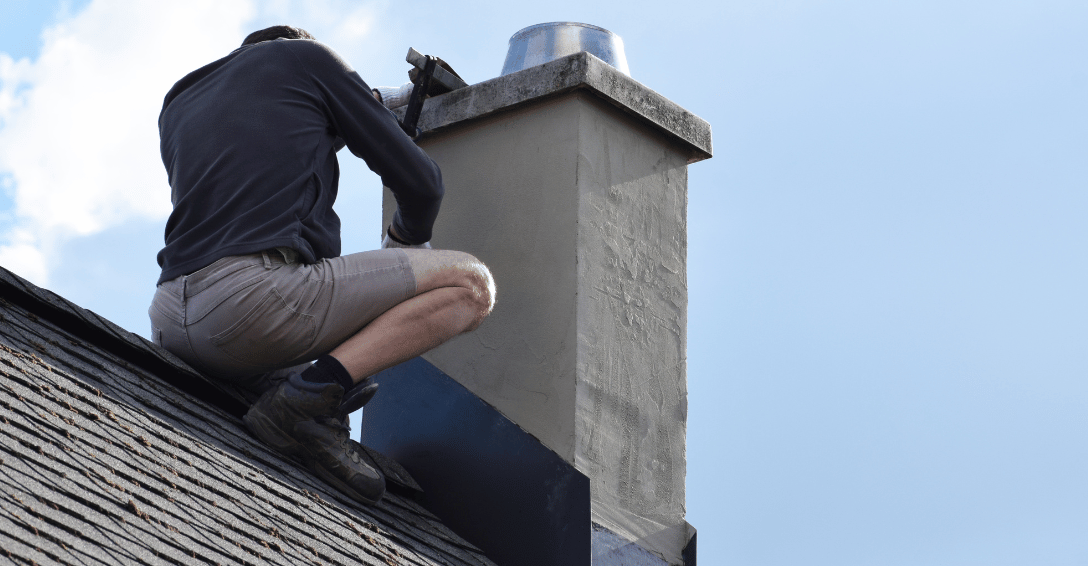

Mortar joints play a crucial role in the structural integrity of a chimney. These joints, also known as masonry joints, are the spaces between bricks or stones that are filled with mortar. Over time, mortar joints can deteriorate due to weathering, leading to issues like cracking, spalling, and leaking. Regular inspection and maintenance of mortar joints are essential to prevent more serious damage to the chimney.
Flue liners, or chimney liners, are an important component of a chimney system. They are installed inside the flue to protect the masonry from heat and corrosion, improve efficiency, and ensure proper ventilation. Flue liners can be made from various materials, including clay, metal, and cast-in-place concrete. Damaged or deteriorated flue liners can compromise the safety and performance of a chimney and may require repair or replacement.

Chimneys are an integral part of many homes, providing warmth and comfort during the colder months. However, like any other part of a home, chimneys require regular maintenance, repair, and sometimes restoration to ensure they function safely and efficiently. Neglecting chimney care can lead to various issues, such as structural damage, leaks, and even fire hazards. In this article, we'll explore the essential aspects of chimney repair and restoration, including common problems, repair techniques, and preventative measures.
One of the most common chimney issues is damage to the chimney cap. A chimney cap is a protective covering that sits atop the chimney, preventing water, debris, and animals from entering the flue. When a chimney cap is damaged or missing, it can lead to moisture intrusion, which can cause a range of problems, including spalling (flaking or chipping of the brick surface), efflorescence (white, powdery deposits on the masonry), and even structural damage.
Another common issue is damage to the flue liner. The flue liner is a crucial component that protects the chimney's masonry from heat and corrosion, while also ensuring proper ventilation. When a flue liner is cracked, deteriorated, or missing, it can compromise the chimney's safety and efficiency, increasing the risk of fire and carbon monoxide leaks.
Mortar joints deterioration is another prevalent problem. Mortar joints are the spaces between bricks that are filled with mortar, a mixture of cement, sand, and water. Over time, exposure to the elements can cause mortar joints to deteriorate, leading to moisture infiltration and structural instability.
Regular chimney maintenance is essential for preventing costly repairs and ensuring the longevity of your chimney. One of the most critical aspects of maintenance is annual inspections. A certified chimney sweep can thoroughly examine your chimney, identifying potential issues and recommending appropriate repairs or cleaning services.
Waterproofing is another crucial preventative measure. Applying a water-repellent sealant to the chimney's exterior can help prevent moisture damage, protecting the masonry and extending the chimney's life. It's important to note that not all sealants are suitable for all chimneys, so it's best to consult with a professional to determine the most appropriate product for your specific needs.
Regular cleaning is also essential for maintaining a safe and efficient chimney. Over time, creosote, a highly flammable substance produced by burning wood, can accumulate inside the flue. If left unchecked, creosote buildup can lead to chimney fires. A professional chimney sweep can remove creosote and other debris, ensuring proper ventilation and reducing the risk of fire.
When chimney damage does occur, several repair techniques can be employed to restore the chimney's integrity and functionality. One common method is tuckpointing, which involves removing damaged mortar and replacing it with new mortar, ensuring a seamless and structurally sound joint.
For more extensive masonry damage, such as spalling or crumbling bricks, brick replacement may be necessary. This process involves carefully removing the damaged bricks and replacing them with new ones, matched as closely as possible to the original masonry in terms of color, size, and texture.
When a flue liner is severely damaged or deteriorated, chimney relining may be the best course of action. This involves installing a new liner inside the chimney, which can be made of stainless steel, cast-in-place concrete, or ceramic tiles. Relining not only improves the chimney's safety and efficiency but can also extend its life.
In some cases, a chimney may require rebuilding, either partially or entirely. This is often necessary when the damage is severe or when the chimney is no longer structurally sound. Chimney rebuilding is a complex process that requires the expertise of skilled masons and should only be undertaken by experienced professionals.
For older homes with historical chimneys, restoration is often a priority. Historical chimney restoration involves preserving the chimney's original materials and design while ensuring its structural integrity and functionality. This process often requires specialized knowledge and techniques, such as using historically accurate mortar mixes and brick-laying methods.
When restoring a historical chimney, it's essential to work with professionals who have experience in this area. They can help ensure that the restoration is completed in accordance with local building codes and historical preservation guidelines, while also maintaining the chimney's authentic appearance.
Chimney repair and restoration work can be dangerous, involving working at heights and dealing with potentially hazardous materials. It's crucial to prioritize safety throughout the process, both for the professionals performing the work and for the home's occupants.
One key safety consideration is ensuring proper ventilation during and after the repair process. This is particularly important when dealing with materials that may emit fumes or dust, such as sealants or mortar mixes. Adequate ventilation helps protect the health of those involved in the repair work and the home's residents.
Another safety aspect to consider is the use of appropriate safety equipment. This may include harnesses, scaffolding, and personal protective equipment (PPE) such as helmets, gloves, and eye protection. Professionals should be trained in the proper use of safety equipment and follow all necessary safety protocols.
When it comes to chimney repair and restoration, it's essential to choose a qualified and experienced professional. Look for a company that is licensed, insured, and certified by recognized organizations such as the Chimney Safety Institute of America (CSIA) or the National Chimney Sweep Guild (NCSG).
Before hiring a professional, ask for references and examples of their previous work. A reputable company should be willing to provide this information and answer any questions you may have about their experience, techniques, and materials.
It's also a good idea to obtain multiple estimates for the work you need done. This can help you compare prices and ensure that you're getting a fair and competitive rate. However, keep in mind that the lowest price isn't always the best choice – it's important to balance cost with the company's reputation, experience, and the quality of their work.
Chimney repair and restoration are essential for maintaining the safety, efficiency, and longevity of your home's chimney. By understanding common chimney issues, preventative maintenance techniques, and repair methods, you can make informed decisions about your chimney's care.
Regular inspections, cleaning, and waterproofing can help prevent many common chimney problems, while prompt repairs can address issues before they become more serious and costly. When it comes to historical chimneys, restoration work can preserve their unique character while ensuring their structural integrity.
Remember to prioritize safety throughout the repair and restoration process, and always work with qualified, experienced professionals. With proper care and maintenance, your chimney can provide warmth and comfort for years to come.

Minneapolis and St. Paul, known collectively as the Twin Cities, are the largest cities in Minnesota by population. According to the Wikipedia article on the Minneapolis-Saint Paul metropolitan area, the Twin Cities have a combined population of over 3.6 million people, making it the 16th-largest metropolitan area in the United States.
For information on the local government and services, visit the official websites of Minneapolis (350 S 5th St, Minneapolis, MN 55415, Phone: 612-673-3000) and St. Paul (15 Kellogg Blvd W, Saint Paul, MN 55102, Phone: 651-266-8989). To explore the many attractions and events in the Twin Cities, check out the Meet Minneapolis and Visit Saint Paul tourism websites.
One of the most iconic landmarks in Minneapolis is the Stone Arch Bridge, a former railroad bridge spanning the Mississippi River. The bridge, located at Portland Avenue South, Minneapolis, MN 55415 (GPS coordinates: 44.9806°N 93.2549°W), offers stunning views of the city skyline and the St. Anthony Falls.
In St. Paul, the Minnesota State Capitol (75 Rev Dr Martin Luther King Jr Boulevard, Saint Paul, MN 55155, GPS coordinates: 44.9551°N 93.1022°W) is a must-see attraction, featuring stunning architecture and free guided tours.
The Minneapolis Sculpture Garden (726 Vineland Place, Minneapolis, MN 55403, GPS coordinates: 44.9696°N 93.2877°W) is another popular attraction, featuring the iconic Spoonbridge and Cherry sculpture and a variety of other contemporary art pieces.
To learn more about the rich history of the Twin Cities, visit the Minnesota History Center (345 W Kellogg Blvd, St Paul, MN 55102, Phone: 651-259-3000) or explore the extensive collections at the Minneapolis Institute of Art (2400 Third Avenue South, Minneapolis, MN 55404, Phone: 888-642-2787). The Twin Cities are also home to numerous theaters and performing arts venues, such as the Guthrie Theater and the Ordway Center for the Performing Arts.
The Twin Cities have a diverse and robust economy, with major industries including healthcare, finance, and manufacturing. For more information on the local economy, visit the Greater MSP website. Some of the largest employers in the area include:
The Twin Cities have an extensive public transportation system, operated by Metro Transit. The system includes buses, light rail, and commuter trains, making it easy to navigate the cities without a car. For book lovers, the Hennepin County Library system (Minneapolis) and St. Paul Public Library system offer a wide range of resources and events.
Sports fans will find plenty to cheer about in the Twin Cities. Minneapolis is home to the Minnesota Twins (MLB), the Minnesota Timberwolves (NBA), the Minnesota Vikings (NFL), and the Minnesota United FC (MLS), while St. Paul hosts the Minnesota Wild (NHL).
Minneapolis is located primarily within Hennepin County (A-2300 Government Center, 300 South 6th Street, Minneapolis, MN 55487, Phone: 612-348-3000), while St. Paul is the county seat of Ramsey County (15 W Kellogg Blvd, St Paul, MN 55102, Phone: 651-266-8500). The cities are served by several school districts, including Minneapolis Public Schools, Saint Paul Public Schools, and various suburban districts.
For additional local resources and updates, follow the official Facebook pages of Minneapolis and St. Paul. Other helpful resources include the Minneapolis Regional Chamber, the Saint Paul Area Chamber of Commerce, and the Twin Cities Habitat for Humanity.
Minneapolis and St. Paul, with their vibrant cultures, diverse attractions, and strong communities, offer an unparalleled quality of life for residents and visitors alike. Whether you're interested in arts and culture, sports and recreation, or simply exploring the unique charm of the Midwest, the Twin Cities have something for everyone. We invite you to experience the best of Minneapolis and St. Paul firsthand and discover why so many people are proud to call these cities home.
| Component | Function | Material |
|---|---|---|
| Chimney Cap | Prevents debris and animals entry | Stainless steel, Copper |
| Flue Liner | Protects masonry from heat and gases | Stainless steel, Ceramic, Clay |
| Masonry | Structural support and venting | Brick, Stone, Concrete |
| Creosote | Byproduct to be cleaned | Not applicable (byproduct) |
| Chimney Crown | Seals top of the chimney | Concrete, Mortar, Metal Sealants |
Chimney caps, also referred to as chimney covers, are installed at the top of a chimney to prevent water, debris, and animals from entering the flue. They also help to protect the chimney crown from damage and can improve draft by maintaining proper airflow. Damper Chimney caps come in various materials, such as stainless steel, copper, and galvanized steel, and can be customized to fit the specific dimensions of a chimney.
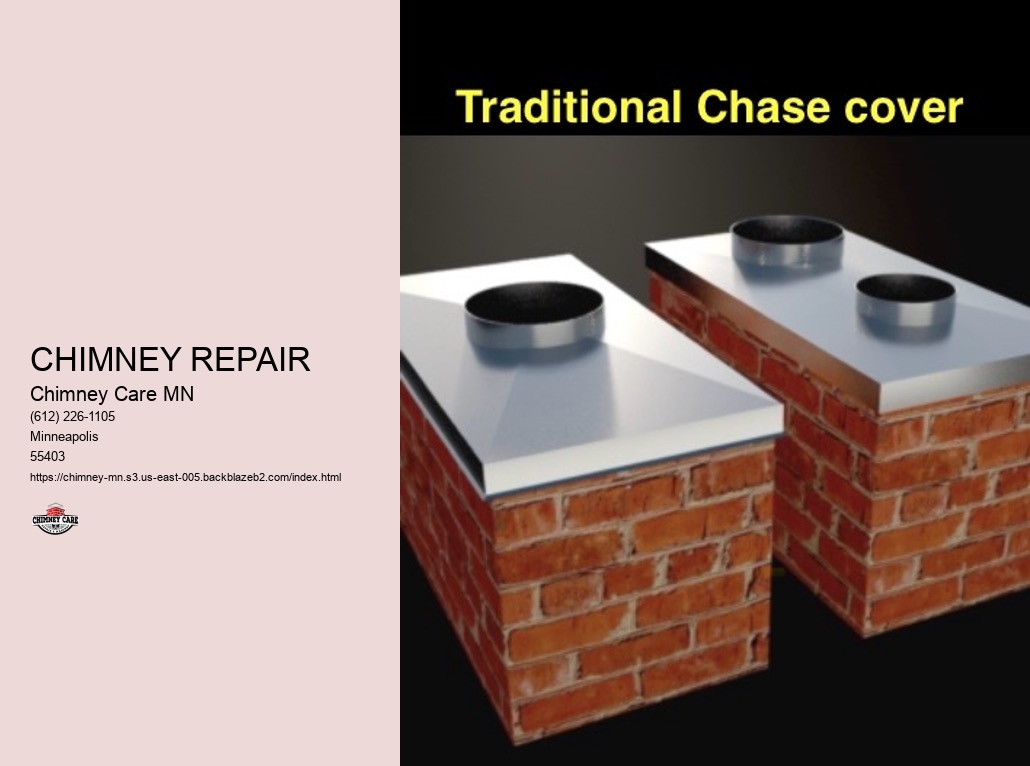
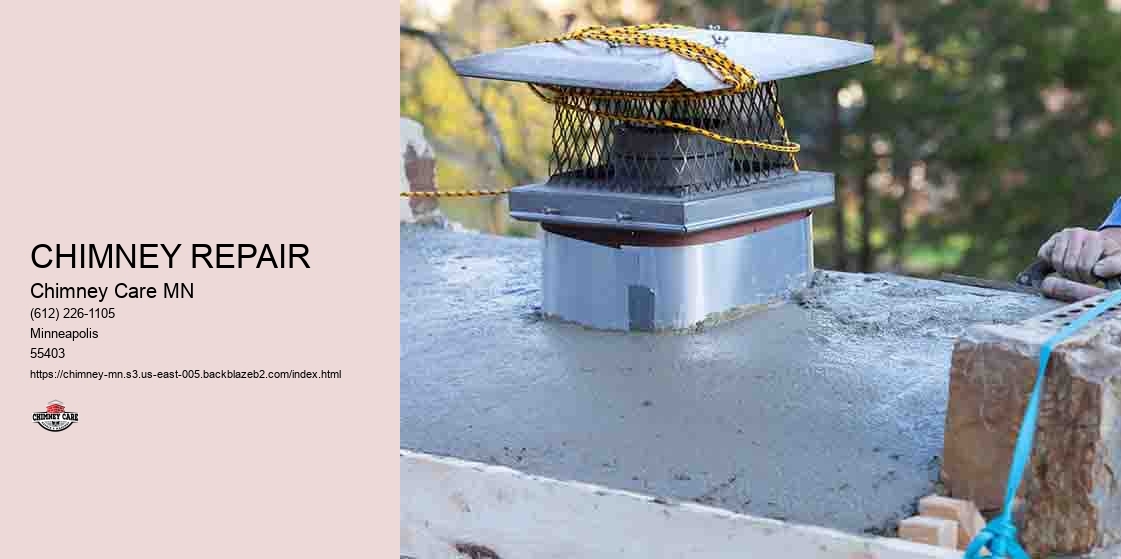
Waterproofing is a critical preventative measure for maintaining the longevity and structural integrity of a chimney. By applying a moisture barrier to the exterior masonry, waterproofing helps to prevent water infiltration, which can lead to damage like spalling, efflorescence, and discoloration. There are various waterproofing treatments available, including siloxane-based sealers, acrylic waterproof sealers, and cementitious waterproofing. Regular application of waterproofing can significantly extend the life of a chimney.
Masonry damage, or brickwork deterioration, is a common issue that can affect the safety and appearance of a chimney. Various factors, such as exposure to the elements, age, and lack of maintenance, can contribute to masonry damage. Some common types of masonry damage include cracking, spalling (flaking or chipping of the brick surface), and mortar joint deterioration. Addressing masonry damage promptly through repairs like tuckpointing, re-flashing, and sealing can prevent further deterioration and maintain the structural integrity of the chimney.
When it comes to chimney repair and maintenance, there are several professional services available to help homeowners address various issues. Inspection services are essential for identifying potential problems and determining the best course of action. Restoration services can help to repair and revitalize damaged or deteriorated chimneys, while cleaning services focus on removing buildup and debris from the flue and firebox.
Understanding the components of a chimney is crucial for proper maintenance and repair. The firebox is the area where the fire burns, while the smoke chamber is the space above the firebox that helps to compress and direct smoke into the flue. The damper is a movable plate that can be opened or closed to regulate airflow and prevent cold air from entering the home when the fireplace is not in use. The flue is the vertical passage that carries smoke and gases out of the chimney, and the chimney crown is the masonry or concrete slab that covers the top of the chimney, protecting it from water damage.
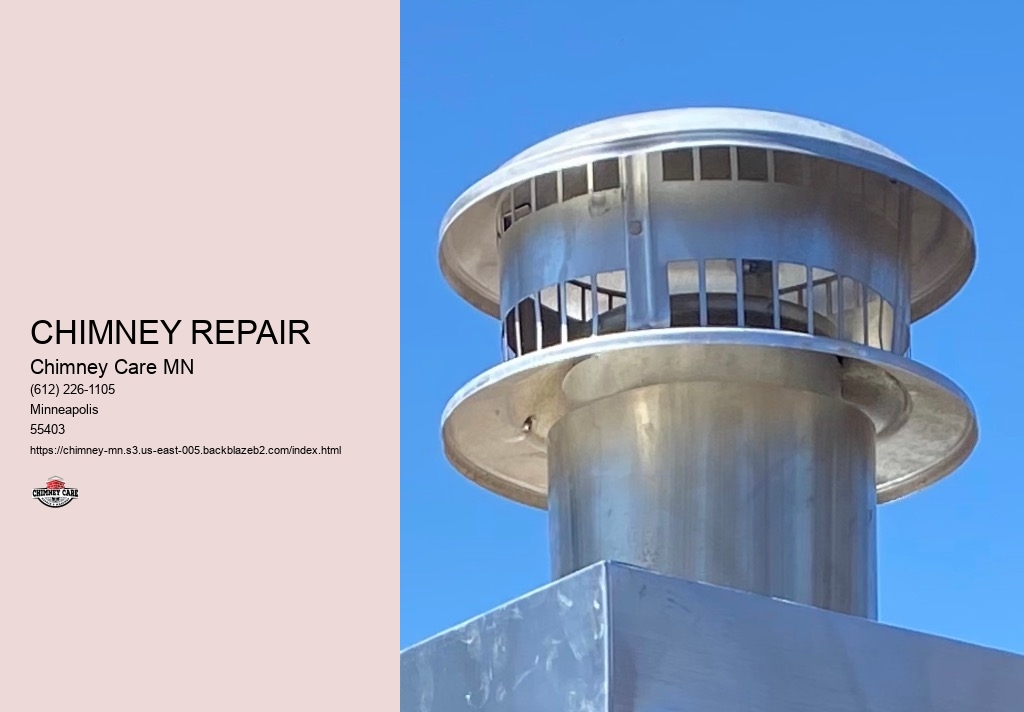
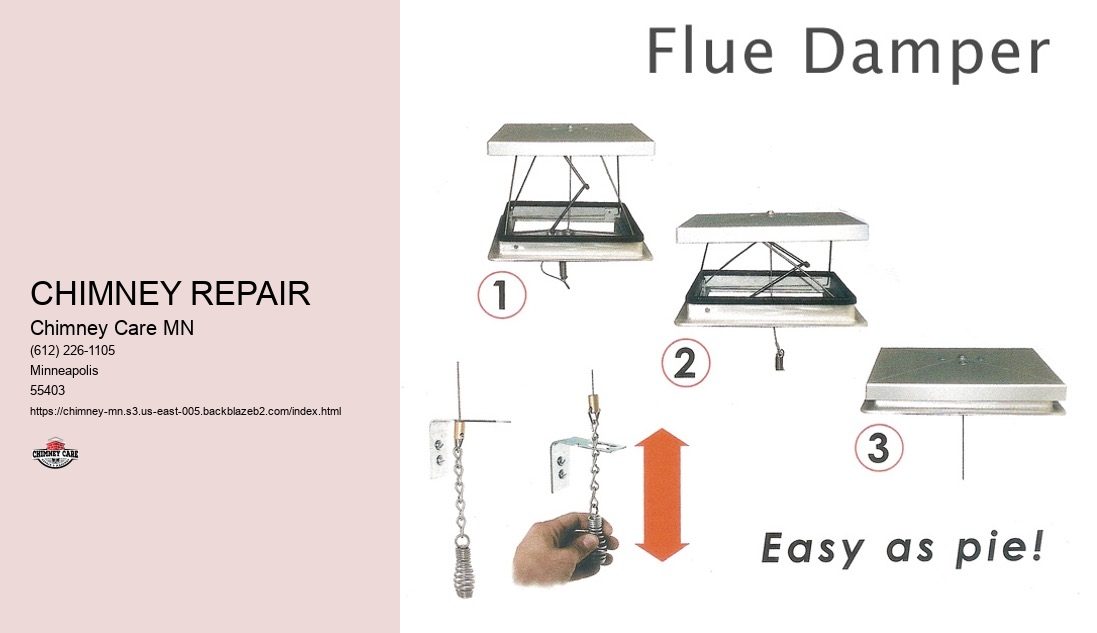
When discussing chimney repair and maintenance, several verbs are commonly used to describe the actions involved. "Repair" refers to fixing or mending damaged components, such as cracked masonry or deteriorated mortar joints. "Restore" implies bringing a chimney back to its original condition, often through a combination of repairs and cosmetic improvements. "Replace" involves removing a damaged or worn-out component and installing a new one in its place, such as replacing a damaged flue liner.
Chimney components have various part-whole relationships that are important to understand for effective repair and maintenance. For example, flue liners are part of the overall flue system, working to protect the masonry and improve efficiency. Chimney caps are part of the external chimney system, serving to prevent water and debris from entering the flue. Mortar joints are part of the chimney masonry, holding the bricks or stones together and providing structural stability. Waterproofing is part of a comprehensive preventative maintenance plan, helping to protect the chimney from moisture damage over time.
When discussing chimney repair and maintenance, certain phrases or collocations are commonly used. For example, one might say "apply waterproofing" to describe the process of protecting the chimney from moisture damage, or "conduct chimney inspections" to emphasize the importance of regular check-ups. Other common collocations include "install chimney caps," "repair mortar joints," and "replace flue liners," each referring to specific tasks involved in maintaining and repairing a chimney.